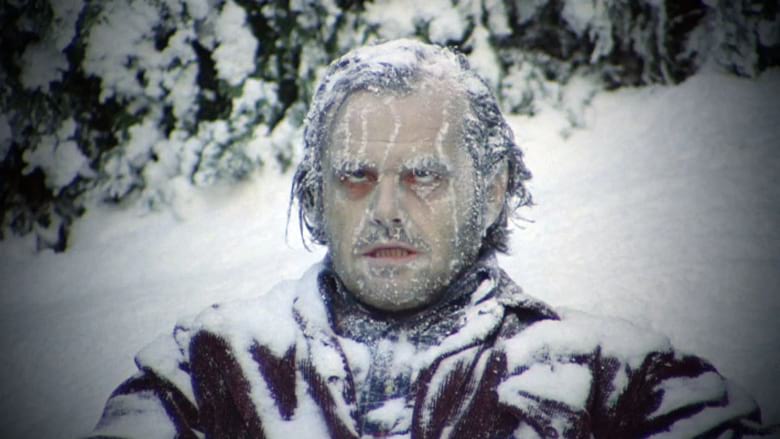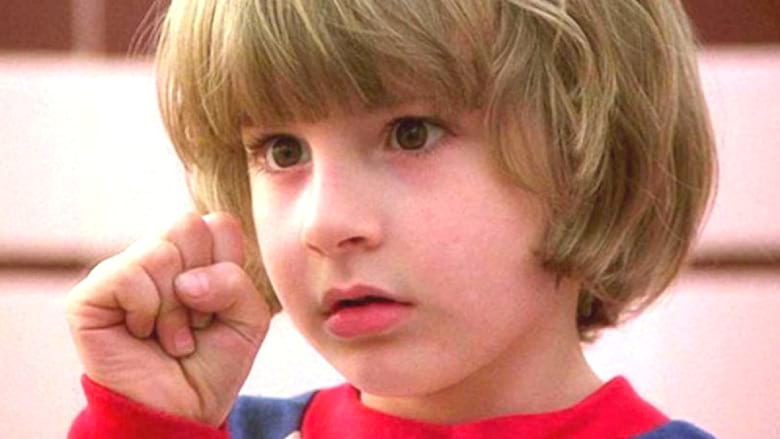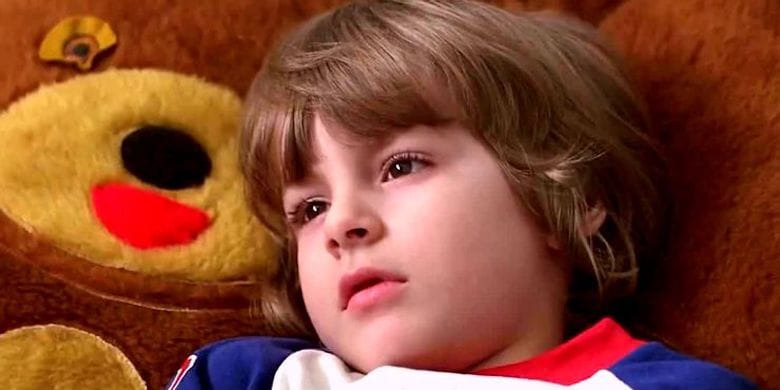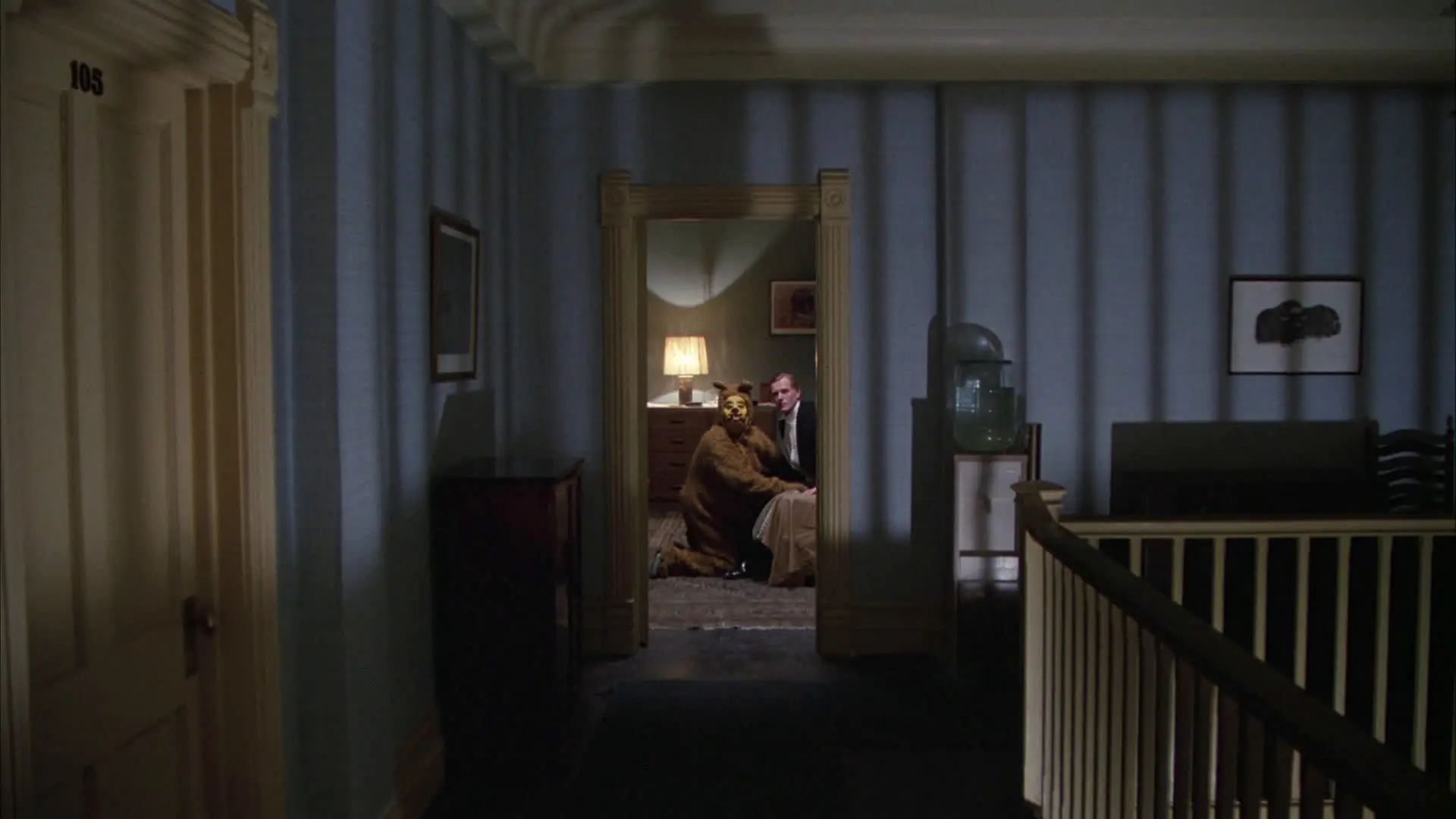The Shining is a film infamous for its puzzles. Rather than sticking to the plan laid out in Stephen King’s 1977 novel, Stanley Kubrick took the story in new directions. However, many of his creative departures from the source material were frustratingly minute. Changing room 217 to room 237 is just one example of many.
Without proper context, decisions like that seem without purpose. Of course, little to no context exists for the film’s many idiosyncrasies. As you might have guessed, a dedicated community has sprung up in the hopes of unraveling some of these mysteries, and a variety of theories have been born. They range from relatively compelling to thrillingly banal.
Think pieces, forum threads, and even feature length films have attempted to untangle the film’s web of confusion. But one of the movie’s odder moments has seen comparatively very little analysis: The Shining bear suit scene. Is there anything to this shot, or is it just one more meaningless moment meant to send Kubrick diehards on a fruitless treasure hunt? Let’s see.
What is The Shining Bear Suit?
Let’s be clear: the bear suit scene is a relatively obscure one sandwiched in between some of the most iconic shots of horror history. It’s not exactly as memorable as the blood pouring out of the elevator or Jack’s frozen face. If you’ve already forgotten about it since the last time you gave Kubrick’s movie a watch, I’ll forgive you.

Here’s a quick rundown to jog your memory. Near the end of the movie, Wendy has fought off Jack and is looking for Danny. As she stalks through the haunted hallways of the Overlook Hotel, she begins to have a series of frightening encounters that seemingly signify one of two things: that she has lost her mind or that the undead spirits of the hotel have been awakened. Naturally, Kubrick leaves it pretty vague as to which of those two scenarios is playing out.
At one point during all of this, Wendy turns her head and looks down the hall into a room with an open door. The camera zooms in dramatically, and we are treated to a strange sight. We see a man in a tuxedo laying on a bed while someone else in a bear suit (and on their knees) is seemingly, uh, pleasuring him. It’s not very explicit, but the implication certainly is. Wendy’s eyes widen with terror, and she runs off.
And that’s basically that. There’s no explanation offered, and we never see either of those two characters again. It’s important to note that we never saw those two characters at an earlier point in the movie either. To anyone watching, The Shining bear suit scene is just a creepy one-off with no place in the overall narrative of the film.
But there has to be some reason why Kubrick decided to include this in such a carefully constructed film, right? …Right!?
The Bear Suit’s Origins
Believe it or not, Kubrick actually didn’t come up with this one. The origins of this scene can be traced back to the original novel. But, in typical fashion, small details of it were changed without any readily apparent reason.
In the book, we are treated to a flashback that features two men. One of them is Horace Derwent, the owner of the Overlook, and the other is a man named Roger. The two of them attend a ball at the hotel together, but it’s not your usual date. Horace asked – or demanded, depending on your interpretation – that Roger accompany him while dressed as a dog. Of course, the canine costume was coupled with Roger actually acting like a dog and thoroughly embarrassing himself for Horace’s pleasure.
— FOUNDATIONS OF HORROR —
Further explore these subgenres and tropes. more>>
#Psychological horror | #Supernatural horror | #Losing your sanity is crazy

Similar to what we see in the movie, this scene in the book isn’t explicitly sexual. But the power dynamic forcing Roger to degrade himself feels sexually motivated, and Kubrick accomplishes the same idea with his brief moment of bear-on-human fellatio.
Okay, so the movie’s take on the book version of The Shining bear suit scene makes sense…. But wait, isn’t it supposed to be a dog suit scene? What’s with the sudden change of species? If Kubrick was going for a literal interpretation based on power and subservience, sticking to the dog costume would have made way more sense.
And thus, we descend into the rabbit hole.
The Shining Bear Suit Explained
Anytime Kubrick makes a small departure from King’s book, The Shining fans (adherents?) assume it must be a measured choice to impart some hidden meaning. If he actively chose to switch it from a dog suit to a bear suit, they reason, he had to have had a purpose in mind. He was a famous director… it’s not like he was making changes out of necessity to cut corners.

To solve the mystery of The Shining bear suit, a tried-and-true tactic has been employed by Internet sleuths: a cinema scavenger hunt. With the idea that the bear must be a symbol, Kubrick-ian detectives have searched through The Shining with the goal of figuring out what bears represent.
There’s only one other bear-related scene that’s really worth discussing, and it happens near the beginning of the film. As Danny speaks with a child therapist intent on uncovering the trauma she assumes he has experienced, he is laying on a bear. A more minute detail later on further establishes a connection between Danny and bears: there are two above his bed in the Overlook.

Naturally, there are a few theories that have sprung forth from associating bears with Danny. One of the most intriguing comes from Rob Ager. He says that bears are a clue meant to show that Danny is suffering sexual abuse at the hands of his father. The sexualized scene involving the bear suit seems to support this, as well as Jack casually reading an issue of Playgirl featuring an article titled “INCEST: Why Parents Sleep With Their Children” at the beginning of the movie.
Is this the definite answer to The Shining bear suit? I have no idea. But that’s what makes this film so enduring and fun. It’s meaty enough to inspire hundreds – if not thousands – of theories both far-fetched and believable. While Kubrick’s deviations from important may have left King feeling insulted, they have allowed a community of cinema conspiracy theorists to keep his story alive and pulsing for decades.
Last Updated on May 8, 2022.


1 Comment